Key takeaways
- A tripod stabilizes the camera, improving image quality by eliminating shake, especially during long exposures or low-light conditions.
- Different types of tripods offer various advantages; professional-grade models provide robustness, while flexible models enable versatility in tricky environments.
- Setting up a tripod correctly—ensuring stability, leveling, and proper ground placement—is crucial for achieving sharp images.
- Using techniques such as adding weight to the tripod and adjusting leg angles enhances stability further, especially in challenging shooting conditions.
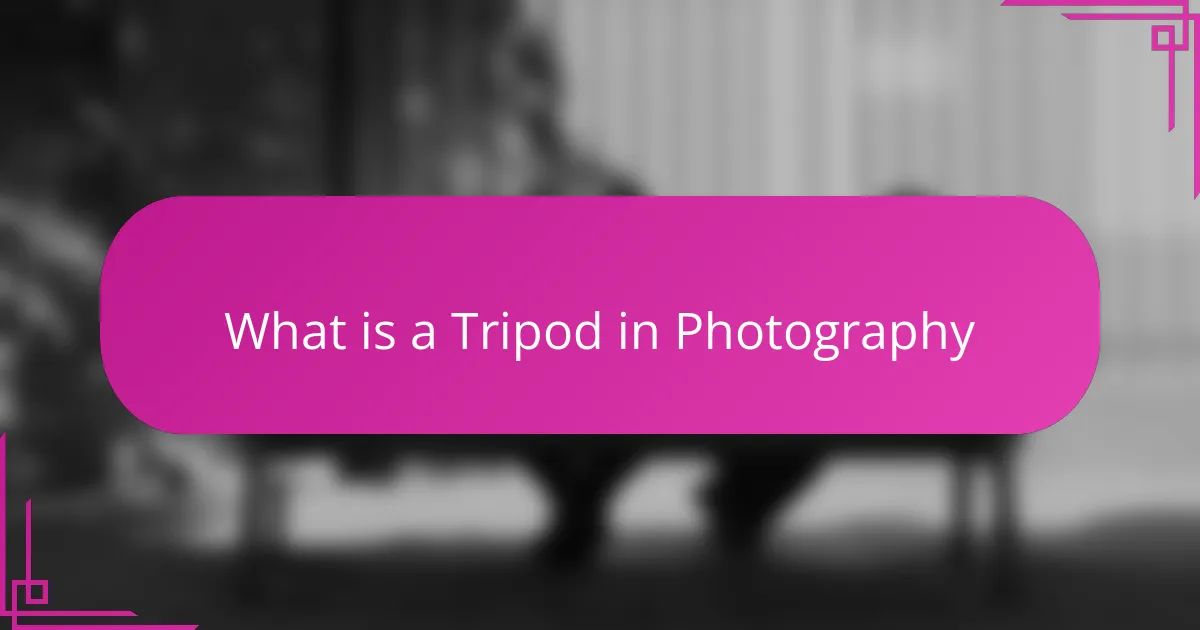
What is a Tripod in Photography
A tripod in photography is essentially a three-legged stand designed to hold your camera steady. I’ve found that using a tripod transforms my approach, especially when I want crisp, clear images without worrying about hand shake. Have you ever noticed how even the slightest movement can blur a shot? That’s exactly what a tripod helps eliminate.
For me, the tripod isn’t just a tool; it’s a reliable partner during long exposure or low-light shoots. It allows me to focus on framing the perfect scene rather than struggling to keep the camera still. The stability it provides often means the difference between a snapshot and a work of art.
One thing I appreciate about tripods is their simplicity paired with their effectiveness. They might seem basic, but their impact on image quality is profound. Do you remember your first time using one? That steady, confident click of the shutter feels like a small victory in my photography journey every time.

Benefits of Using a Tripod
Using a tripod has revolutionized the way I shoot, especially when I want every detail sharp and precise. The stability it provides means I no longer worry about that tiny, almost invisible shake that ruins an otherwise perfect moment. Have you ever taken a photo and noticed how just a slight movement turned it blurry? That’s where a tripod acts like a silent guardian.
One time, I was capturing a sunset with fading light, and without my tripod, I know my hands wouldn’t have been steady enough for the long exposure needed. Holding the camera steady for even a few seconds felt impossible, but setting it firmly on the tripod made all the difference. It gave me the freedom to experiment and capture stunning, vibrant images I’m proud of.
Beyond sharpness, using a tripod brings an unexpected confidence. It lets me take my time composing the shot, knowing the camera won’t wobble or shift. Have you noticed how rushing out of fear your hands won’t hold still often compromises creativity? The tripod removes that pressure, allowing you to focus solely on your artistic vision.

Types of Tripods for Stability
When I first started using tripods, I quickly realized that not all are created equal. There are lightweight travel tripods that are easy to carry but sometimes feel a bit flimsy in windy conditions. Have you ever struggled with a tripod that just couldn’t keep your camera steady on uneven ground? That’s when I learned the value of sturdier, more robust options.
One of my favorite types is the professional-grade tripod, which boasts heavy-duty legs and a solid build. Sure, they add weight to my gear bag, but during important shoots—like landscape or long exposure—they provide unmatched stability. I remember a night shoot where my camera didn’t budge an inch despite gusty winds, all thanks to a high-quality tripod.
Then there are flexible tripods with bendable legs, which I find incredibly handy for shooting in unconventional spots. Wrapping them around tree branches or railings has saved me on more than one occasion. They might not offer the same rigidity as metal tripods, but their versatility makes them indispensable when I need stability in tricky environments. Have you tried one yet? They might just change the way you think about steady shots.
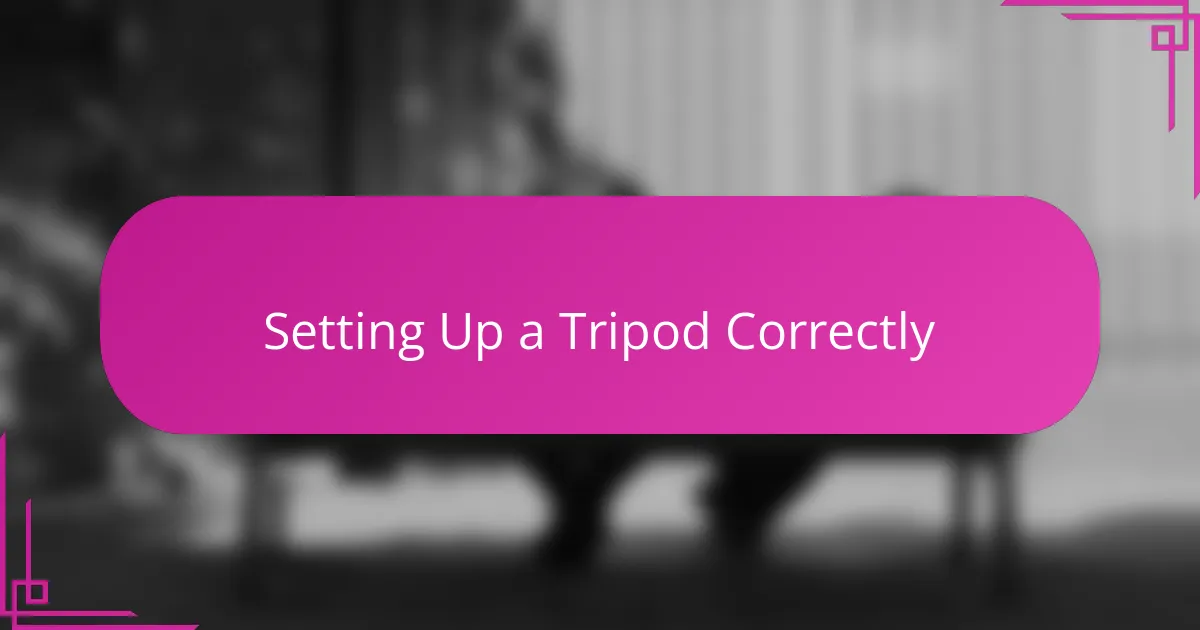
Setting Up a Tripod Correctly
Getting the tripod setup right is more than just extending the legs and clicking the camera on. I always start by ensuring each leg is fully secure and locked; there’s nothing worse than watching your carefully framed shot wobble because of a loose latch. Have you ever had to re-shoot because your tripod gave way? It’s that little detail that makes all the difference.
Leveling the tripod is another crucial step that I never skip. My go-to trick is using a bubble level if the tripod has one—or just eyeballing it against the horizon—because even a slight tilt can throw off the composition. Once, during a landscape shoot, I overlooked this and got a horizon that was just off enough to irritate me for weeks. Getting it right from the start saved me from that hassle.
Finally, placing the tripod on solid, stable ground matters more than most people realize. I tend to avoid setting it on uneven or soft surfaces unless I stabilize it with extra weight or adjust the leg lengths carefully. Early on, I learned the hard way when a gust of wind toppled my tripod on sandy soil. Since then, I always double-check the footing before committing to the shot.
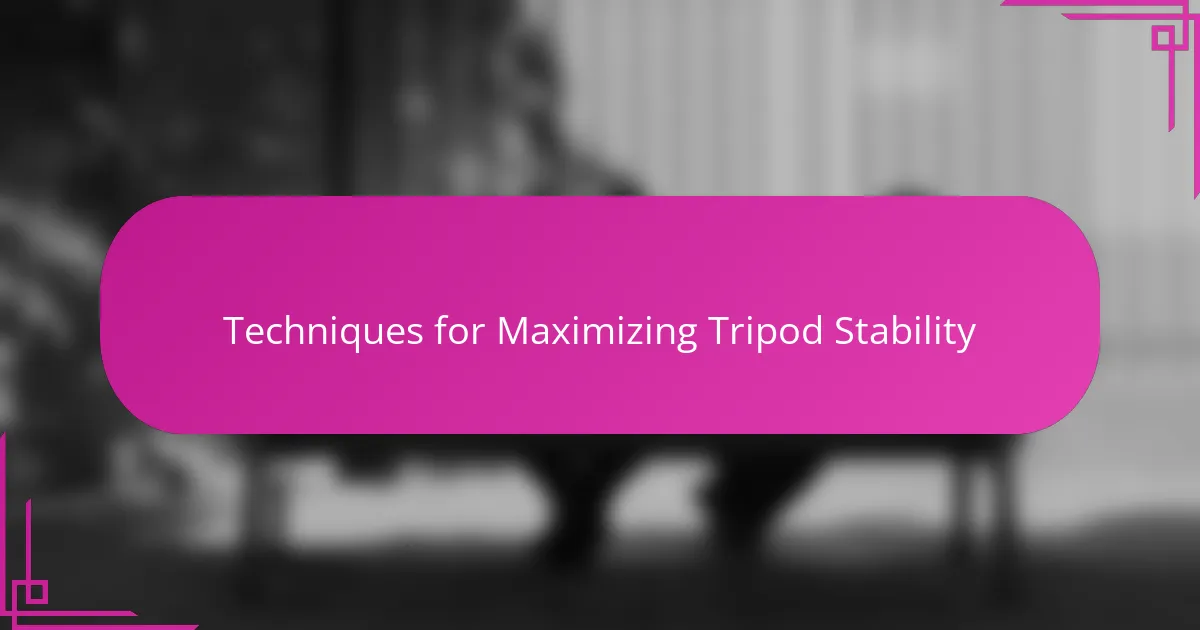
Techniques for Maximizing Tripod Stability
One technique I swear by for maximizing tripod stability is hanging a weight from the center column hook. It might seem simple, but adding my camera bag or a heavy object significantly steadies the setup, especially on windy days. Have you ever felt your tripod wobble just when you were about to take that perfect shot? This little trick has saved me from blurry images more times than I can count.
Another thing I pay close attention to is the leg angle and spread. Spreading the legs wider when possible lowers the center of gravity and creates a much sturdier base. I remember struggling during a mountain shoot where a narrow tripod stance caused my camera to shake; adjusting the legs wider immediately made the difference between a shaky frame and a sharp one.
Lastly, I always avoid fully extending the center column unless absolutely necessary. Although it feels like gaining a bit of height is tempting, raising the center column too much can introduce instability. I learned this the hard way during a twilight cityscape session when my carefully composed shot blurred because the tripod was slightly top-heavy. Keeping the camera closer to the base keeps everything rock solid.
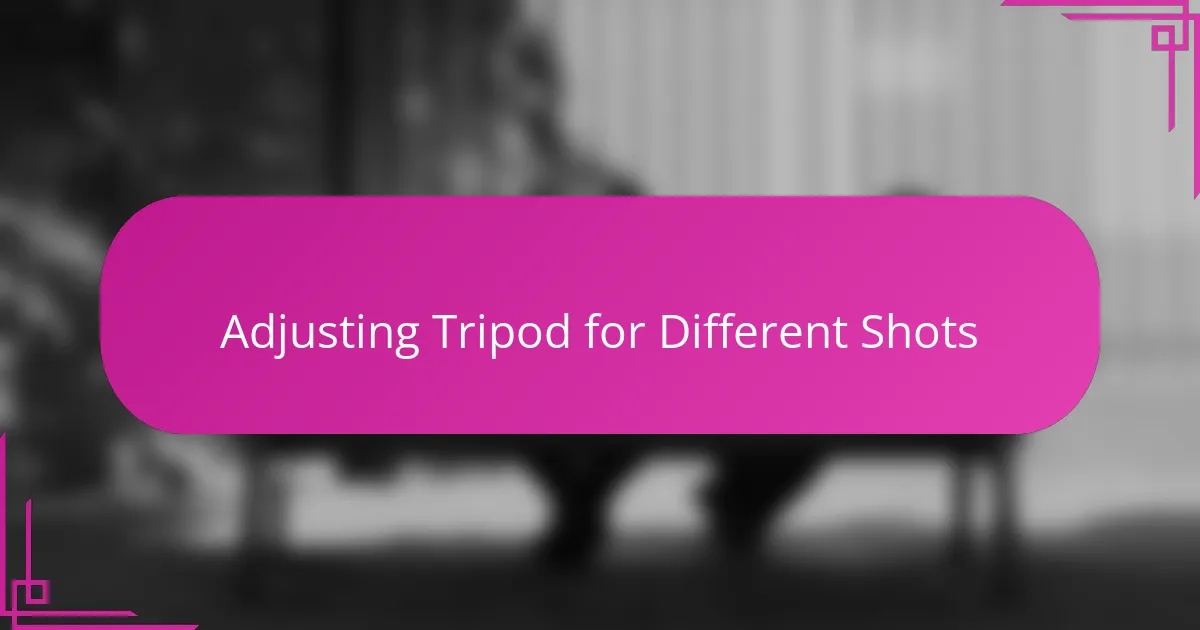
Adjusting Tripod for Different Shots
Adjusting my tripod for different shots is something I’ve learned to do intuitively over time. For instance, when I’m shooting close to the ground, I have to bend the legs or shorten them unevenly to get low angles without compromising stability. Have you ever tried low-angle photography? Getting that perspective without a tripod adjustment feels like balancing on a tightrope.
Sometimes, my shots require shooting at odd heights or sharp angles. In those moments, I rotate the tripod head carefully while double-checking each lock to make sure nothing slips. Once, while capturing a waterfall from above, a slight looseness caused a wobble that ruined the frame—an experience I definitely don’t want to repeat.
Then there are times when I switch between portrait and landscape orientations quickly. I find that adjusting the center column and repositioning the camera on the tripod ball head is key for smooth transitions. It might seem like a small detail, but it affects how steady and comfortable the shot feels. Have you noticed how easy it is to lose composition flow when fumbling with these adjustments? Getting familiar with the exact movements keeps everything seamless.
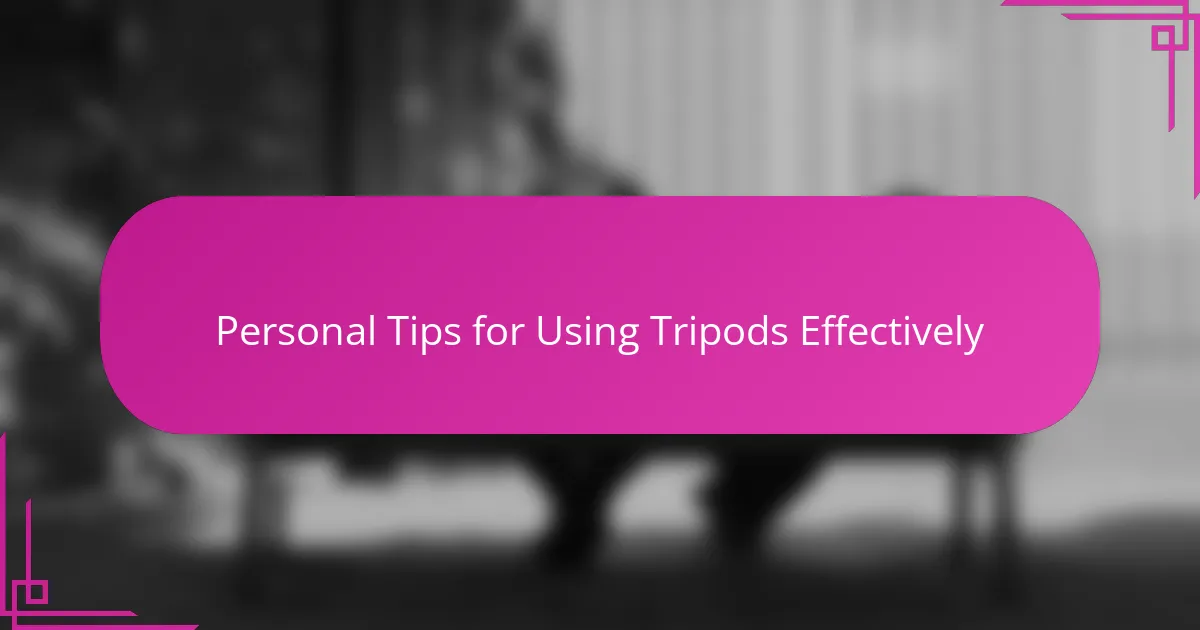
Personal Tips for Using Tripods Effectively
One tip I’ve come to rely on is always carrying a small remote shutter release or using the camera’s timer function. It’s incredible how even the tiniest press of the shutter button can introduce shake. Have you ever pressed the shutter and immediately doubted if the photo was sharp? This simple step has saved countless shots from becoming disappointments.
I also pay close attention to the tripod’s leg placement, especially on uneven terrain. Early on, I learned the hard way that having one leg slightly unstable can ruin the entire stability of the setup. Now, I take a moment to wiggle each leg and reposition if needed—sometimes even digging a little to ensure a firm hold. This habit gives me peace of mind during long exposures and low-light shoots.
Lastly, don’t underestimate the power of patience when using a tripod. I often find myself adjusting and readjusting the setup longer than expected, but that extra minute pays off with sharper images. Have you felt tempted to rush your tripod setup? Trust me, slowing down and giving your gear the proper attention can turn an okay shot into a standout one.